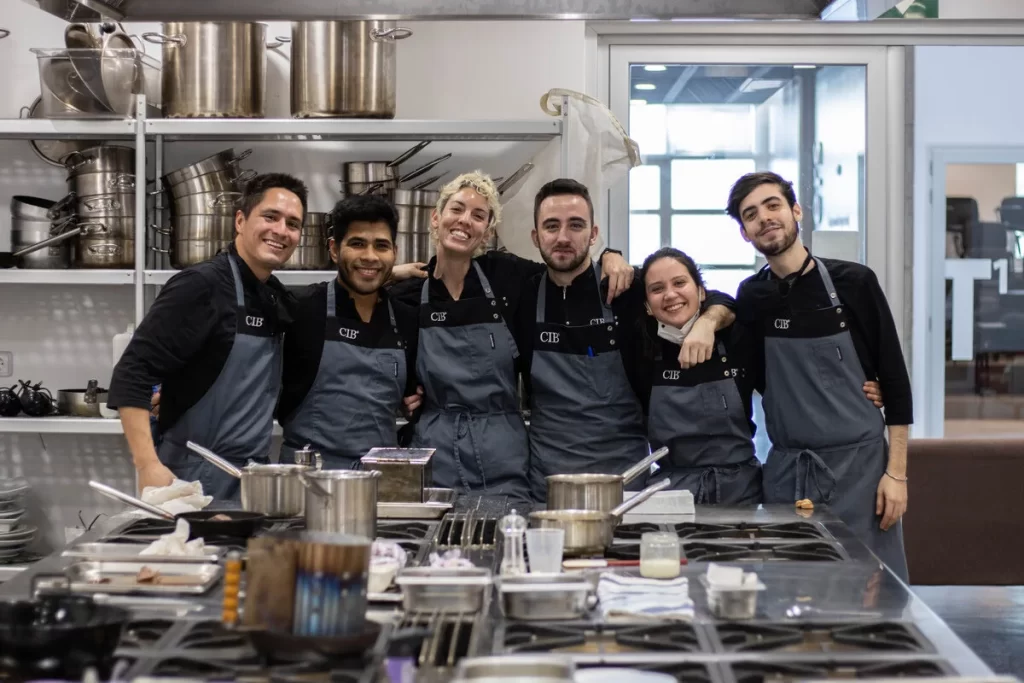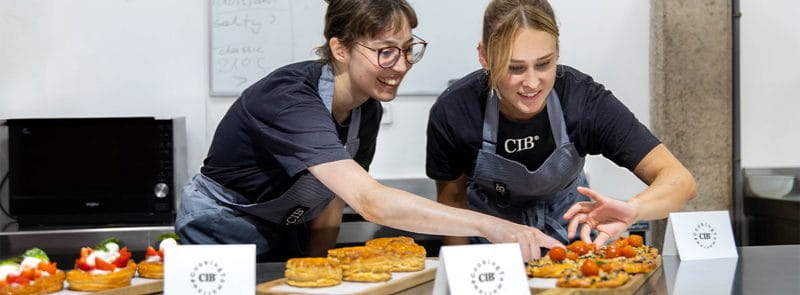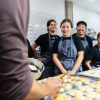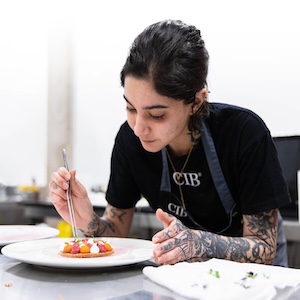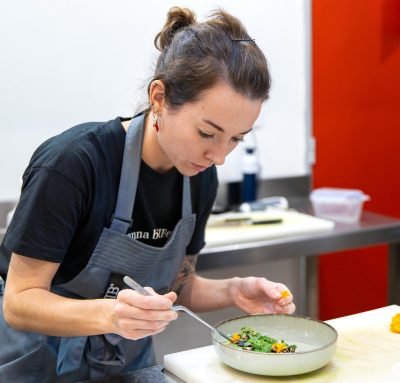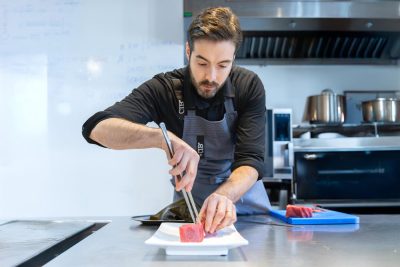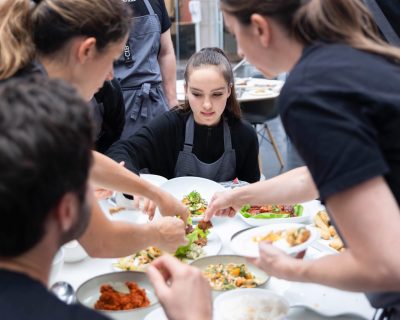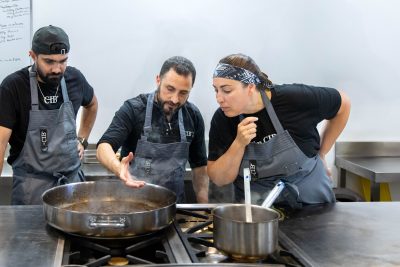Working in the confectionery industry offers many different job opportunities. It is very different to work in the dessert department of a restaurant than in a bakery. The profile of a pastry chef required for each position depends a lot on training and previous professional experience. If you choose to work in a restaurant, having restaurant experience, even if it is not in desserts, will be important.
We talked to Alejandro Gabaldón, a student of the CIB · Culinary Institute of Barcelona, who after an internship in the dessert department of Lasarte(***) restaurant in Barcelona, managed to stay working there once he finished his stage. Alejandro is very happy to have been able to have this experience in a three Michelin star restaurant and tells us what are the main functions of a pastry chef in a restaurant like this.
Alejandro came to CIB eager to learn more about haute cuisine and creativity, after taking a basic cooking course in Mallorca. His goal was, and still is, to set up his own restaurant in Mallorca. During her training at CIB in the PEC·D2 – Postgraduate Specialization in Advanced Pastry and Chocolate, she became enthusiastic about restaurant pastry. She had been interested in pastry since she was very young learning from her older sister who made homemade cakes. With Xavier Donnay, in Lasarte, he found the way to exploit both passions.
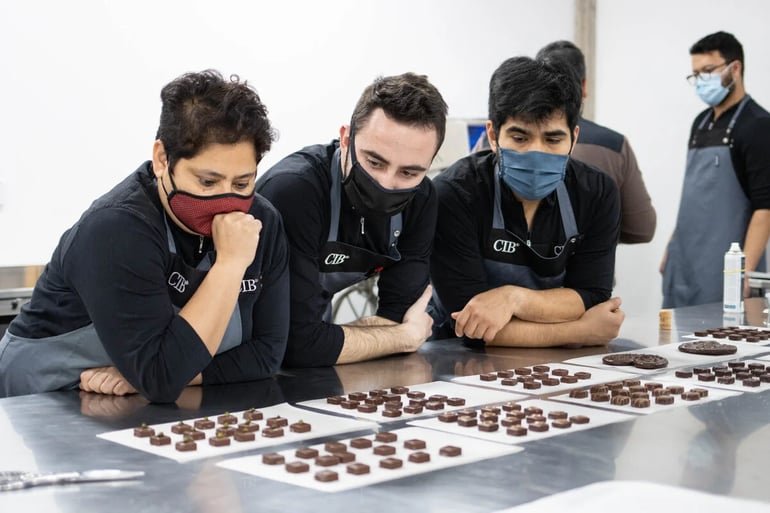
How are the restaurant desserts?
Tasting menus usually have a very marked structure. As is logical, restaurant desserts are the final part of a menu. That is why they are usually served after the main courses of the menu, such as meats and fish. The dessert department of a restaurant is in charge of elaborating a first dessert, or pre-dessert, which is usually refreshing and has sweet and salty components, in charge of cleaning the palate of those last dishes with such strong flavors. Then, there is a second dessert or main dessert and finally small pieces of pastry called petit fours, which give the final sweet touch to the diner’s experience in the restaurant.
Restaurant desserts usually have a more developed concept than in a bakery. They use many ingredients and elaborations to convey an idea such as a memory, a place or a moment. Thus, many of these elaborations require a lot of preparation in advance, sometimes 24 or 48 hours in advance, combined with the elaborations during the service, in order to provide the best experience for the diner.
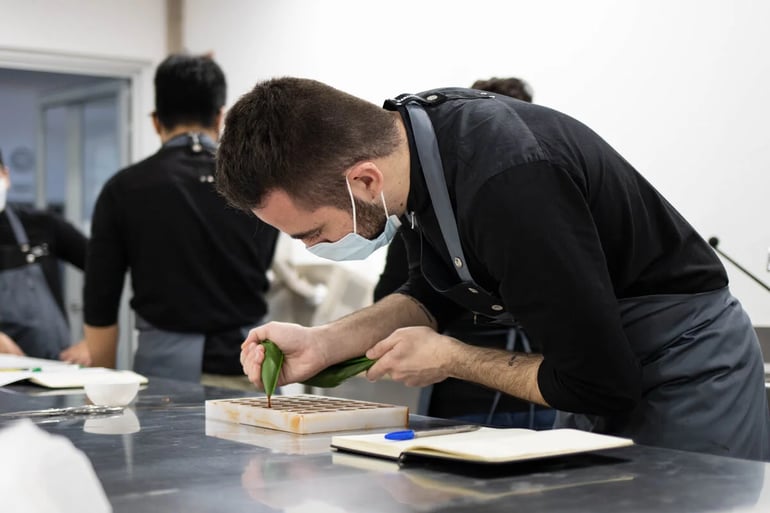
What do pastry chefs do on a daily basis?
To understand what the main tasks of a pastry chef are, we asked Alejandro about his responsibilities as a member of Lasarte’s dessert team. The day-to-day work of a pastry chef in a restaurant can be divided according to the needs of the establishment into different time slots:
- The first hour of the morning, around 9 or 10 a.m., is dedicated to producing the previous elaborations that need to be prepared for service hours in advance. Normally, it is produced with the service of two days later in mind, so it is necessary to control the stock of these preparations, so that there is never a shortage.
- Then the mise en place is prepared prior to the service, producing the preparations that are needed immediately before the service. We always try to make everything as fresh as possible as far as possible, so each preparation has a specific time in which it must be done, not before.
- Around 12 a.m., all the cooks eat to be ready for service. Just before the service, the bread is heated and the petit fours are prepared, which are usually the most delicate pieces, using for example choux pastry that is not in optimal conditions if it is produced before.
- During service, mainly the desserts are plated and the preparations that can be made more immediately are prepared. At certain times, especially at the beginning of the service, the dessert department has a light workload and supports the other departments.
- After the noon service, around 4 p.m., there is a rest until the evening service, when dinner is served at 7 p.m. before coming in, and the process is repeated until the end of the service.
- On days when there is not so much work of previous preparations, the cooks organize their week and create new dishes taking into account the new menu proposals and the new products available.
When a cook or pastry chef works in both services on the same day, the workday is demanding, but it is usually compensated with holidays.In this case, Lasarte is only open from Wednesday to Saturday, which means that Alejandro has three holidays.
Cuando un cocinero o pastelero trabaja en ambos servicios un mismo día, la jornada laboral es exigente, pero suele compensarse con días de fiesta. En este caso, Lasarte solo abre de miércoles a sábado, con lo que Alejandro tiene tres días de fiesta.
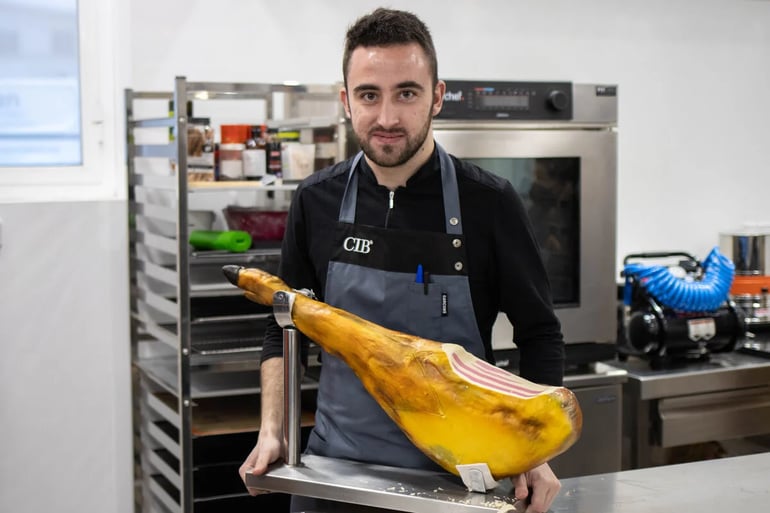
Organization of a restaurant’s dessert department
Working in a restaurant is an intense job and one day is never the same as the previous one. There are days when more dishes come out than others or there are many diners with special needs. You have to be prepared for that. In haute cuisine restaurants there is usually a menu and several menus, so, even if it seems that there are few desserts, you never know what will come out more. At Lasarte, Alejandro works with another colleague and Xavier Donnay, the restaurant’s pastry chef. There are things that he needs to work on alone and elaborations that come out better if they are done as a team. There is a constant task of validation and review from one to the other, to ensure that everything comes out with the desired quality.
Alejandro tells us about the importance of being aware of the needs of his colleagues, both in the same batch and in other batches, because the work is not always distributed. There are some batches that will have moments in which they have more work than they can easily take on and others that at that moment do not work as much. The fact that a tasting menu has a very marked structure of several dishes with their evolution from starters to fish, meats and finally desserts, makes this collaboration easier between the different parties.
Everyone can foresee when they are going to have more work to do, taking into account the dishes that are being served at any given moment.
Staying active and looking out for others was one of the main reasons Alejandro was hired after finishing his internship, along with his self-demanding nature and willingness to learn.

